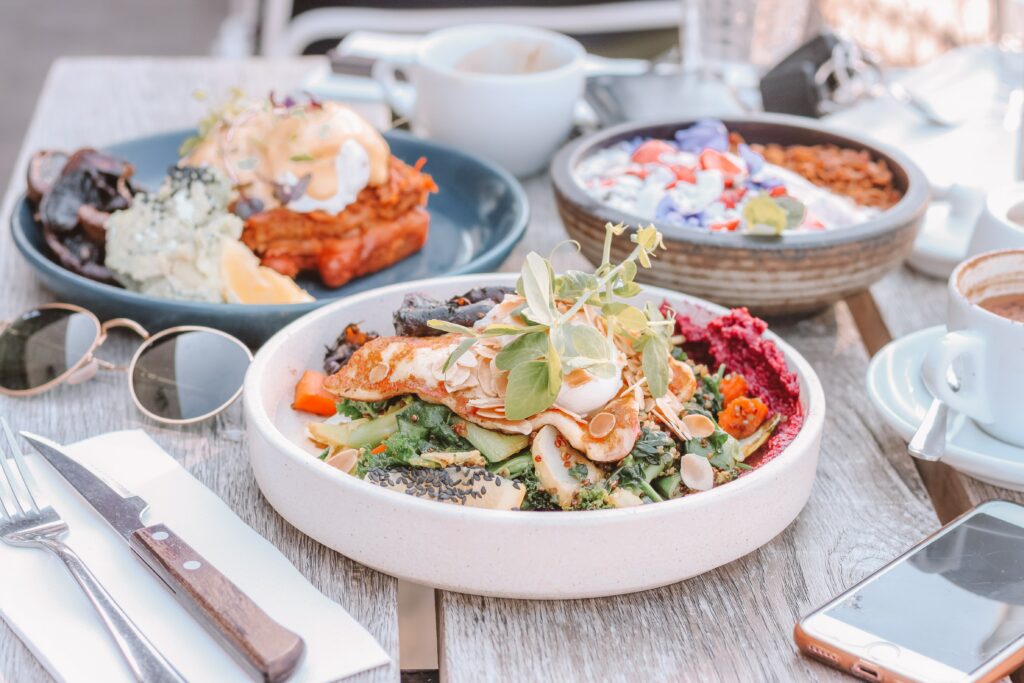Mahabhutas and food: the role of doshas

The Mahabhutas interact together to form three energies: the doshas. The doshas represent the basis of living. Vāta, Pitta and Kapha make up the physical, physiognomic and physiological characteristics of each individual. Your appearance, your eating habits or your stress management are all details that allow you to determine your dominant energy and by extension your Ayurvedic constitution. Vāta, Pitta or Kahpa: the three doshas are in you but in different proportions. So, what is exactly the relationship between Mahabhutas and food?
Mahabhutas and food: the role of doshas in choosing your diet
The dominant dosha
From this moment, your birth constitution, your dominant doshas, will not budge. With an inappropriate lifestyle, including eating, you can unbalance one or more doshas, but this will not change your birth constitution.
To help you determine your doshas, we always recommend getting in touch with an Ayurveda advisor, who will be able to determine your birth constitution much more accurately than the online tests or that you will find in publications.

Know your dosha first
To take advantage of all the benefits of the Ayurvedic diet, you must be able to determine your Dosha in order to know the foods to choose as well as all the rules to follow to be at your best.
Here are the main characteristics of each Dosha:
- Pitta: Intelligent, rigorous and determined. This dosha corresponds to an average build, a nervous temperament as well as digestive problems and cardiovascular dysfunctions.
- Vata: Creative, energetic and good-natured. People who have this dosha are generally calm, but can suffer from poor digestion, fatigue, or anxiety.
- Kapha: Calm, down to earth, and loyal. This dosha is characterized by excess weight, as well as diseases like asthma, depression or diabetes.
The 3 Doshas and diet choice
Vata diet
If you are Vata, you are made up of air and ether, you are in movement, projects full in the head and legs; you are close to hyperactivity, both mental and physical.
To calm this energy which is likely to increase with the cold and dry period, it will be necessary to adopt a comforting diet. It should be more fatty, hot and heavy than usual and especially to eat regularly, which may not always be your case.
So, choose meat, vegetables cooked in oil, vegetable soups with ghee (clarified butter, better fat in ayurveda). Other good choices include:
- Walnut oil, and white rice (whole grains are difficult to digest for Vata);
- Sesame seeds, and warming and comforting spices, such as cinnamon, ginger, cumin, etc;
- Limit crucifers, raw foods, whole grains, bitter or astringent substances.

Pitta diet
You are the fire, so you must do everything to avoid rekindling the flame. Very spicy, very acidic dishes, too high temperatures are to avoid. Your task is to refresh your body and your thoughts: fresh fruits and vegetables full of water, and sweet fruits like melon or grapes. Sweet, bitter or astringent vegetables, just like salads and refreshing spices will help.
Your flavors to prioritize: the sweet and the astringent. In your case, you must also take care of your head: all this energy can sometimes give way to anger and rashes of any type. To avoid this, cultivate peace around you and choose with pleasure a sporting activity directly related to water.
Kapha diet
To regulate kapha, experts recommend to avoid all heavy or fatty foods. That includes sugar, cakes, fried foods, dairy products and frozen and very cold products. This category should favor light and dry dishes. They also recommend that kapha profiles have daily physical activity. Thus, avoid spending days sitting on an office chair for example. Kaphas need to move and eat lightly. a balanced salad at midday is a good ally of kapha.
For kapha, ayurveda recommends a diet based on half of fresh vegetables, one third of whole grains, one fifth of protein, and fruits in moderate amount. Note that the kapha profile needs more fruits and vegetables than the pitta or vata profiles. Kapha needs the lightness of vata and the dynamism of pitta.

